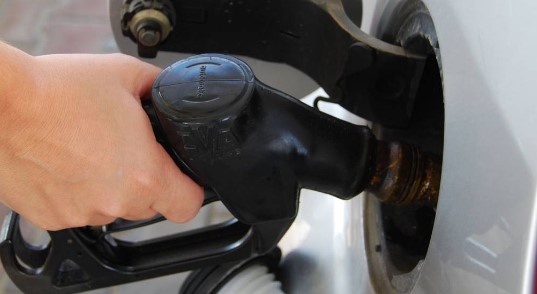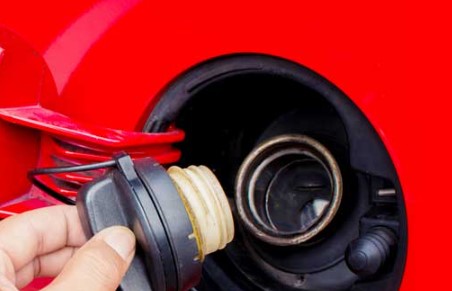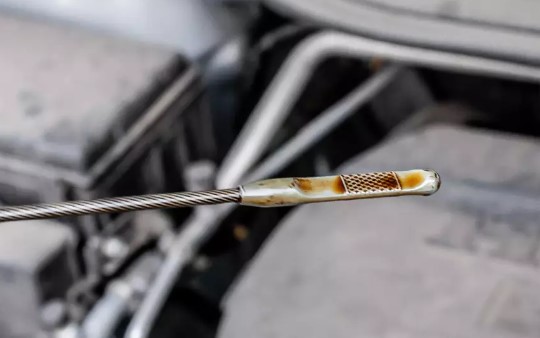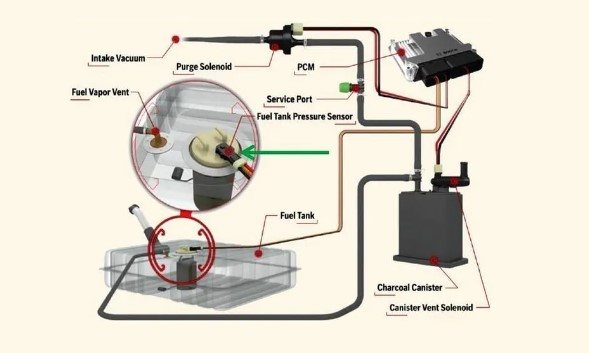It is advisable always to keep a full gas tank in your car. However, it is not ideal to overfill the gas tank as too much fuel can cause trouble and damage the vehicle eventually. Recognizing when you have a filled gas tank can be difficult, but sure signs may indicate this issue, such as gasoline odors or fumes inside the vehicle and even liquid sloshing around while driving. It is essential to address any symptoms of an overfilled gas tank immediately to avoid further complications.
Whether or not topping off your fuel tank when filling up at a station should also be considered. Although it might seem logical, leaving room for air will help with vapor lock and other issues related to too much fuel in the system. This article provides more information about recognizing an overfilled tank’s symptoms, how to fix it, and whether or not topping off your fuel at the pump is recommended. With proper knowledge, spotting troubles associated with excess petrol becomes much easier to detect and adequately manage if they occur during your drive.
🚨You may be interested in: 8 Steps How to Reset a Mass Air Flow Sensor?
Symptoms of An Overfilled Tank

Staying aware of the fuel in your vehicle’s gas tank is essential. An overfilled tank can cause severe damage, leading to expensive repairs and possible accidents. A few signs may indicate a filled tank, such as the needle on display pointing beyond full, a bulging filler neck, or not being able to add more fuel after the safety clicks off. If any of these symptoms appear, it is best to take precautionary measures and have the excessive gas removed from the tank by a professional.
The ramifications of having too much fuel in one’s car can be severe. Gasoline vapors can seep into other parts of the engine, causing corrosion. At the same time, too much pressure inside an engine cylinder due to gasoline vapors could cause piston failure when starting or running your vehicle. Furthermore, excess liquid gasoline entering sealed systems like catalytic converters has also been known to lead to premature losses resulting in costly repairs. Therefore, drivers must remain mindful of how much gas they are putting into their vehicles and pay attention to any potential signs indicating an overfilled tank.
See also: How To Turn Off Dashboard Warning Lights
What Will An Overfilled Gas Tank Do?

Too much fuel in a car’s gas tank is not ideal. It can bring about several consequences and risks that many people may not be aware of. According to autochimps.com, some of these include gasoline spillage, other air fumes, and potential vehicle damage over time due to excessive spending on more than a standard tank’s worth of gas.
These outcomes should be avoided, particularly if one is looking to fill their tank quickly and go on their way. However, some steps can be taken to resolve this issue, such as utilizing different techniques or strategies to return the gas tank to its correctly filled state. Knowing how best to repair a gas tank with too much fuel will help prevent further issues from arising due to this mistake.
See also: How You Can Make Sure That Warning Lights Are Working?
How To Fix Overfilled Gas Tank

When faced with an overfilled tank, it can be easy to panic. However, some steps can be taken to address the spill without danger. According to fixingengines.com, one should clean up the mess as best possible and then take the vehicle out on a drive at a high rpm to burn off some fuel. After driving, lower your speed and return to regular operation, as everything will return to its place afterward. Unfortunately, it isn’t possible to siphon gasoline from the tank; thus, burning fuel is your only option here.
When thinking of topping off your gas tank, it’s important not to overfill it, or you may find yourself in this situation again. Keep track of how much gas you have put into your tank when filling up so that you don’t make such a mishap again!
Should You Top Off A Gas Tank?

Many people may be tempted to top off their tanks after the automatic fill clicks, but this bad idea can cause more harm than good. Overfilling a gas tank can result in spillage and damage to your vehicle. It is better not to make it a repeated action, and if you do fill it, turning on the car should be avoided as much as possible. The best way to ensure optimal tank filling is by letting the automated system do its job without any additional assistance from you.
When fueling up at a gas station, avoiding topping off your tank can save you time and money in the long run. Accidents due to overflowing could cost more money than what was saved by trying to fill up just “a little more” when prompted by that clicking noise at the pump. Therefore, it is best practice for everyone who drives vehicles powered by gasoline or diesel fuel not to attempt topping off their tanks regardless of how full they feel like they should be filled with energy.
🎯Suggested article: How To Use Yale Forklift Warning Lights
Can You Start An Overfilled Car?

When a car is overfilled with gasoline, it can be dangerous to start the engine. However, burning off any additional gas in the tank is usually the best course of action. Before starting the vehicle, any excess fuel should be cleaned up as much as possible. In cases with severe fuel spillage, consulting with an expert or someone at a nearby gas station is advisable before proceeding. As each situation may vary, due diligence should always be taken when dealing with flammable liquids such as gasoline.
Filling a gas tank with too much fuel can be an issue. It is essential to avoid overfilling the tank and remove the nozzle when the safety clicks off at the station for optimal results. To help determine if your tank has been sated, you can look at the filler neck, examine the fuel gauge, and track how much goes into your tank when filling it up.
Accidentally filling up your gas tank every once in a while won’t have a drastic impact. However, repeated excessiveness could lead to costly repairs that may not be covered by insurance or warranties, so it is essential to take cautionary measures when refueling your vehicle. We hope this information was helpful! The more you know about an overfilled gas tank, the easier it will be to notice and stay away from this trouble in the future.
FAQs About How To Easily Fix An Overfilled Gas Tank
Can overfilling the gas tank damage the engine?
Overfilling the gas tank can lead to liquid gas entering the charcoal canister, or carbon filter, which is only designed for vapor. If this happens, it may cause the car’s performance to suffer and damage the engine. Therefore, taking care when refueling a vehicle is essential to avoid such issues.
Can overfilling a gas tank cause a check engine light?
The Evaporative System is designed to detect when the gas tank has become overfilled, which can cause pressure on its components and trigger the “Check Engine” light. If this happens, emptying some of the gasoline from the tank to reset the system and turn off the light may be necessary.
Can overfilling your gas tank break your gas gauge?
It was once believed that overfilling the fuel tank would not damage the gauge; however, this is no longer true. In modern times, it can result in considerable harm to the vent system and saturation of the charcoal canister, which could lead to expensive repairs. Therefore, knowing capacity limits when filling up a vehicle’s fuel tank is essential.

